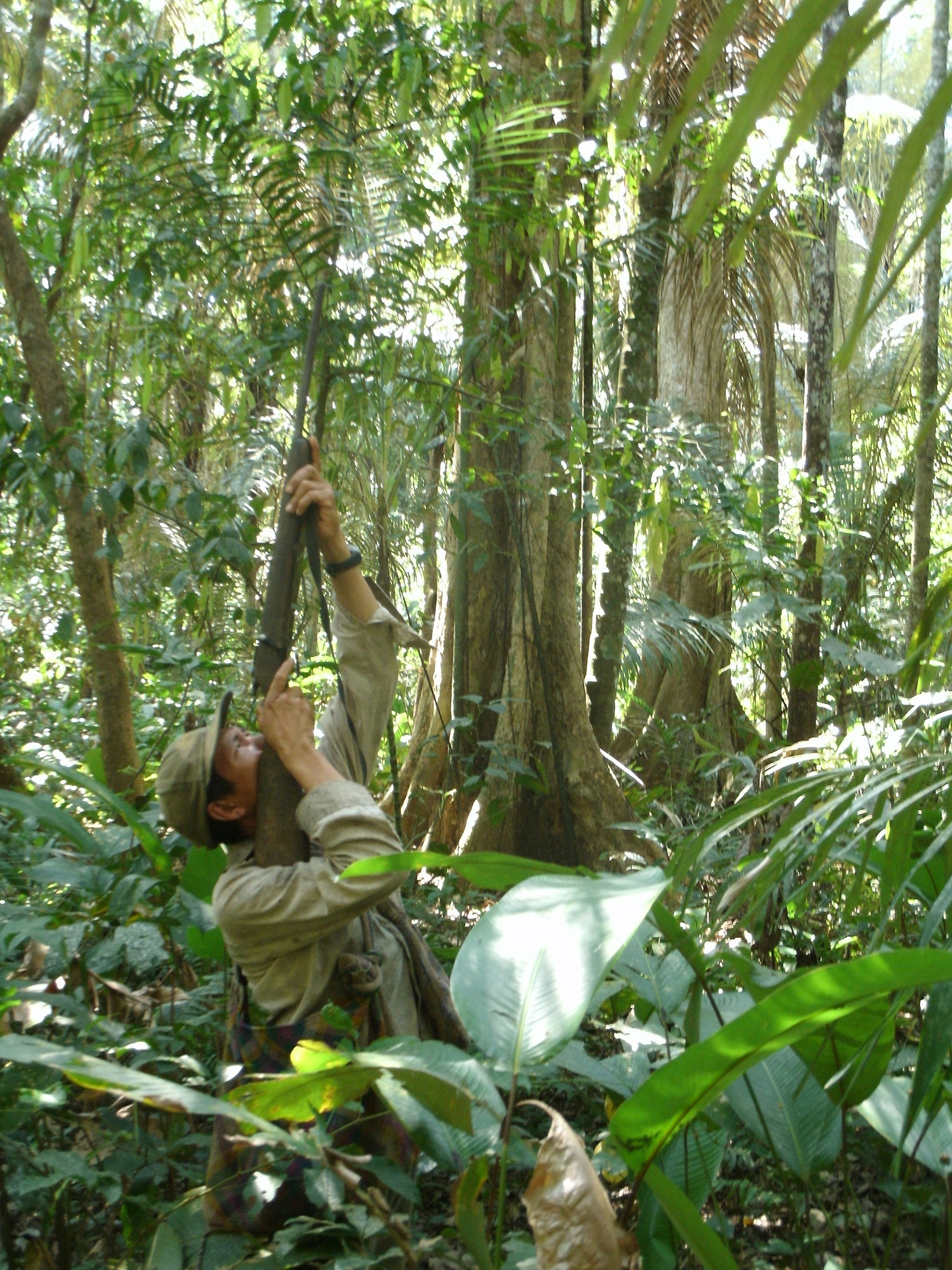Measuring a lifespan of learning

Tsimane hunters in the Bolivian Amazon. Image by Benjamin Trumble.
Human adaptation is a unique combination of maturing and learning slowly from childhood to adulthood, the development of complex production skills and the establishment of cooperative sociality.
A new study published in Science Advances provides powerful empirical confirmation that the human hunting skill-production curve for male hunters from around the world — one essential skill that calls upon all human adaptation faculties — is universal and important for understanding how humans became a “special” animal.
The research is the result of collaborators using large, geographically and culturally diverse data on modern hunter-gatherer communities from 40 study sites around the world. Arizona State University researchers involved in the study include Kim Hill, with his long-term research on the Ache in Paraguay, and Ben Trumble’s fieldwork with the Tsimane in Bolivia. Hill is a research associate with the Institute of Human Origins and professor in the School of Human Evolution and Social Change. Trumble is an assistant professor with the School of Human Evolution and Social Change and the Center for Evolution and Medicine.

Tsimane hunter in the Bolivian Amazon. Image by Benjamin Trumble.
All traditional societies that were part of the data from 23,000 hunting records of 1,800 individuals show very low hunting productivity in childhood and mid-teen years, followed by a steep increase until middle age (30 to 50), and then a slow decline until the mid-60s. While there is some cross cultural and interindividual variation (mainly in peak age and rate of decline in older ages), the pattern appears to be a universal feature of the human hunting niche. Other empirical studies have also suggested a similar pattern for plant collection by women and even a similar age-specific income curve from modern industrial states like the United States.
This study is important because it helps clarify the adaptive “socioeconomic” niche of humans. It shows that a unique resource acquisition pattern had already emerged in small-scale hunter-gatherer societies and has been retained to the present. This pattern emerged when our ancestors began to use their big brains and cultural adaptations, or tools and techniques, to become predator specialists on complex prey and high-quality plant resources.
In short, children produce little to no food resources, teens begin a steep learning curve and final skill development doesn’t peak until middle age. This is dissimilar to any other known mammal where most individuals are able to meet their own food/resource needs efficiently soon after weaning. The human niche, on the other hand is about learning and development of skills (human capital) that ultimately lead to high productivity in the final one-third of the lifespan.
“In order to effectively hunt, you need to know the behavioral patterns of dozens of prey species, what time of day they sleep, what their tracks look like, what calls they make and what those calls mean. It is not just about how fast you can run, or how steady you are with a bow,” said Trumble.
Notably, earlier work by Hill and colleagues had shown that the hunting production curve peaks almost 20 years after peak body strength is achieved. Successful hunting takes skill and know-how, not just adult size and strength.
“For 99% of human history, we lived as hunter-gatherers,” said Trumble. “In the U.S., we can drive to a fast-food restaurant and pick up 2,000 calories, but that is not been the case throughout human history. With the Tsimane in the Bolivian Amazon, the average hunt lasts nearly nine hours and covers more than 11 miles. Even then food isn’t guaranteed, only around two-thirds of hunters return with meat.”
The pattern shows that ancestral human foraging societies faced a life trajectory similar to modern Americans, with young adult hunters, mainly developing skills that later lead to high resource production rates in middle age. This also means that juveniles are totally dependent on adults for resources while they dedicate their time to learning. Much like today's college students, young adults in hunting societies are still mainly learning rather than bringing in high income. And, like in today’s world, middle age and older adults are the workhorses of society that subsidize younger individuals who are learning skills and cultural traits.
“Humans are in a very unique adaptive niche that we might call the 'learning niche,'" said Hill. “For many years of our lives we produce little and dedicate our time to learning. Then as we grow older we use that knowledge to produce high levels of resources that can subsidize the next generation of young learners. This leads to the unique human social system of intergenerational dependency throughout the lifespan.”
More Science and technology

ASU-led space telescope is ready to fly
The Star Planet Activity Research CubeSat, or SPARCS, a small space telescope that will monitor the flares and sunspot activity…

ASU at the heart of the state's revitalized microelectronics industry
A stronger local economy, more reliable technology, and a future where our computers and devices do the impossible: that’s the…

Breakthrough copper alloy achieves unprecedented high-temperature performance
A team of researchers from Arizona State University, the U.S. Army Research Laboratory, Lehigh University and Louisiana State…

